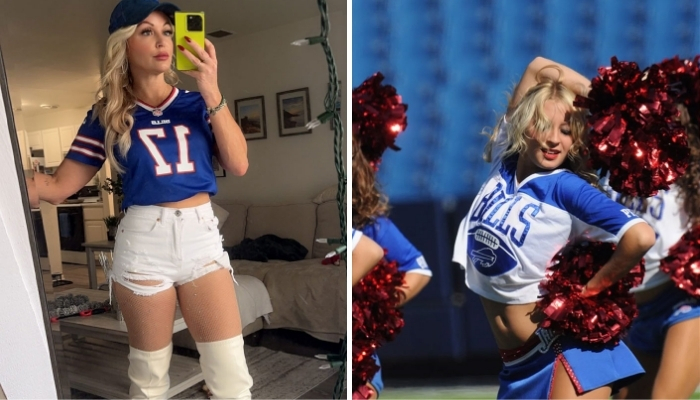Ex-Cheerleader Unveils 9 Insane Rules She Followed With The Buffalo Bills
In May 2014, the Buffalo Bills cheerleading team, known as the Buffalo Jills, was suddenly disbanded after a lawsuit was filed against the team and the NFL franchise. The cheerleaders claimed they were misclassified as independent contractors instead of employees, which caused violations of New York state minimum wage laws, labor rights, and other employment regulations.
The lawsuit also named Cumulus Media, a major media company, as one of the defendants, according to a report by ESPN.
This case brought national attention to cheerleader wages, employment law violations, and the need for fair workplace practices in the sports entertainment industry.
After eight long years, the high-profile lawsuit against the Buffalo Bills and Cumulus Media finally came to an end in March 2022. As part of the settlement, Cumulus Media paid $4 million, while the Buffalo Jills organization agreed to pay $3.5 million. This marked the final chapter of the legal case — and sadly, the end of the cheerleading squad itself. Over 50 former cheerleaders never reunited or returned to the field.
However, one former cheerleader, Shana Klimeczko, who performed during the 2005–2006 NFL season, is now sharing her story. In an exclusive interview with People Magazine, she opened up about her time as a Buffalo Jills cheerleader and the strict, unexpected rules they had to follow.
Her revelations have sparked conversations around NFL cheerleader treatment, workplace rights, and the need for more transparency in sports organizations.
The tryouts were no easy feat
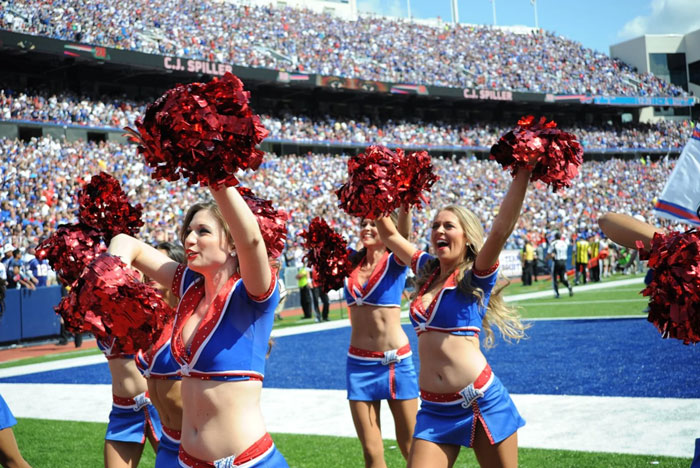
Shana Klimeczko was one of the fortunate few to earn a spot on the Buffalo Jills cheerleading team on her very first tryout — a rare accomplishment, considering the squad only had around 35 members. But even though she made the cut, the journey was far from easy.
Mastering the choreography was only part of the challenge. According to Shana, the auditions focused on much more than just dance technique or musical timing.
“You have to be fit, right? So they judge you on the way you look in your uniform,” she told People Magazine in her exclusive interview. “You wear shorts and a sports bra, and you are judged on obviously the way you perform, but not just that — like your smile, your hair, and your body.”
Her story shines a light on the high physical standards, body image pressures, and appearance-based expectations placed on NFL cheerleaders — topics that continue to raise questions about workplace discrimination, beauty standards in sports, and employee rights in the entertainment industry.
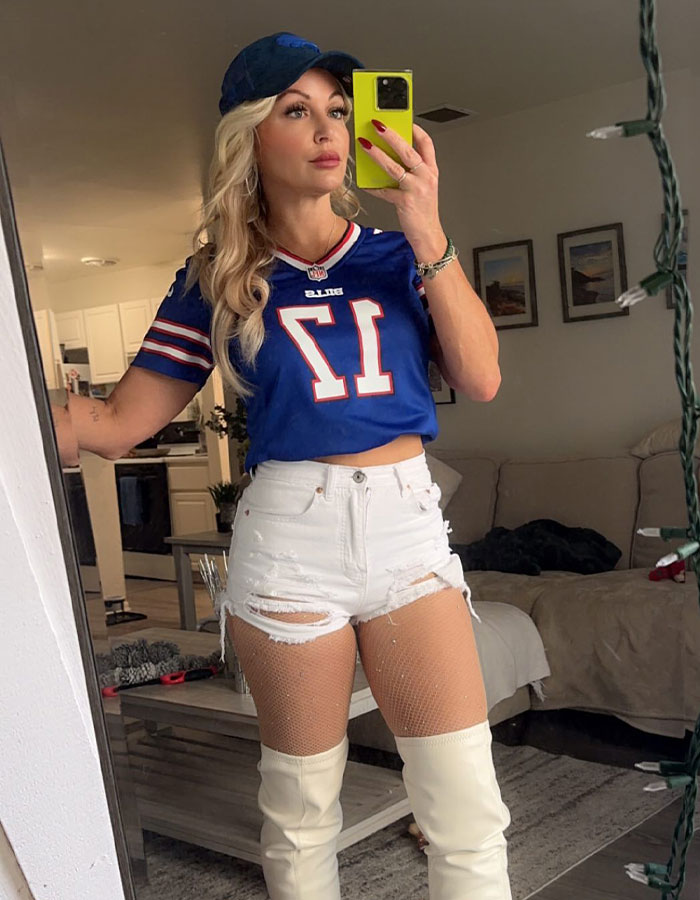
In addition to the physical demands, the tryout process for the Buffalo Jills cheerleading squad was also mentally exhausting. According to Shana Klimeczko, the selection process stretched over several weeks and included multiple interviews. The reason? The team wasn’t just looking for strong dancers — they needed women who were also well-spoken, since cheerleaders often made public appearances, attended corporate events, and represented the NFL team’s brand image.
Despite the pressure and intensity, Shana shared that the environment wasn’t harsh.
“[The coaches] weren’t really mean,” she recalled. “If you just put in the work, it’s worth it.”
Her story highlights the mental health challenges, public relations expectations, and professional standards NFL cheerleaders face behind the scenes — topics that are becoming more relevant in discussions about employee well-being, women in sports, and career development in entertainment fields.
Strict rules regarding makeup and nail color
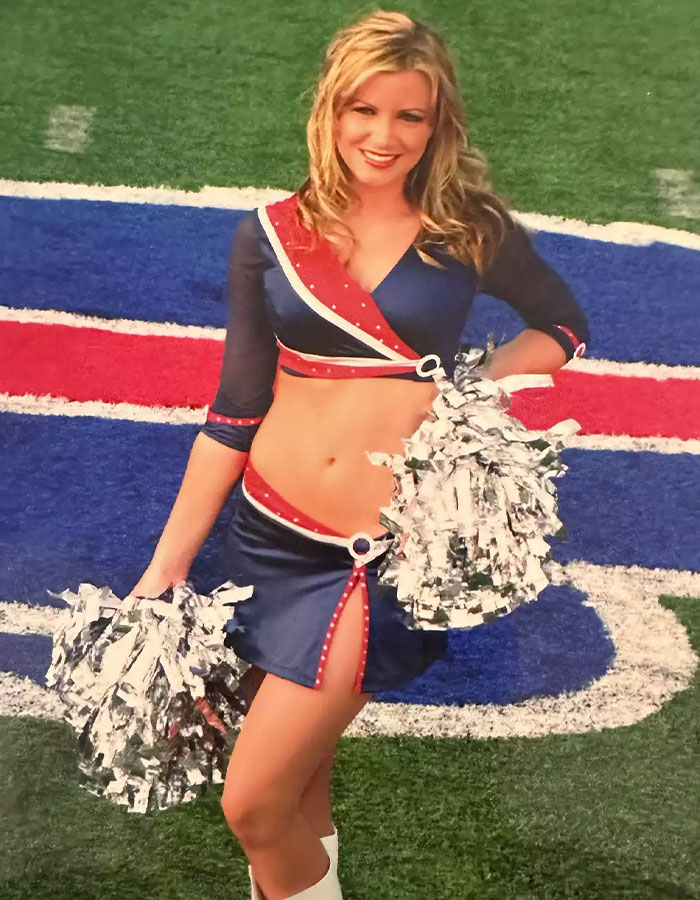
When it came to appearance, glamour and uniformity were non-negotiable for the Buffalo Jills cheerleaders. According to Shana Klimeczko, the beauty standards extended beyond just the uniform — every cheerleader had to maintain a very specific look for games and events.
“You actually had to have the correct nail color as well as lipstick — and if you didn’t have the right lipstick or nail color, you weren’t allowed to be at the game or you’d be benched,” Shana revealed in her interview.
Preferred nail choices included French manicures, light pink, or clear polish. When it came to makeup, red lipstick and false eyelashes were mandatory. The look wasn’t supposed to be “heavy,” Shana said, but it was meant to act as a cosmetic cover-up, helping cheerleaders meet the NFL’s image standards.
This strict attention to beauty reinforces the conversation around appearance-based workplace rules, gender expectations in sports, and the pressure to meet beauty norms in high-visibility roles like NFL cheerleading.
Getting involved with NFL players was prohibited
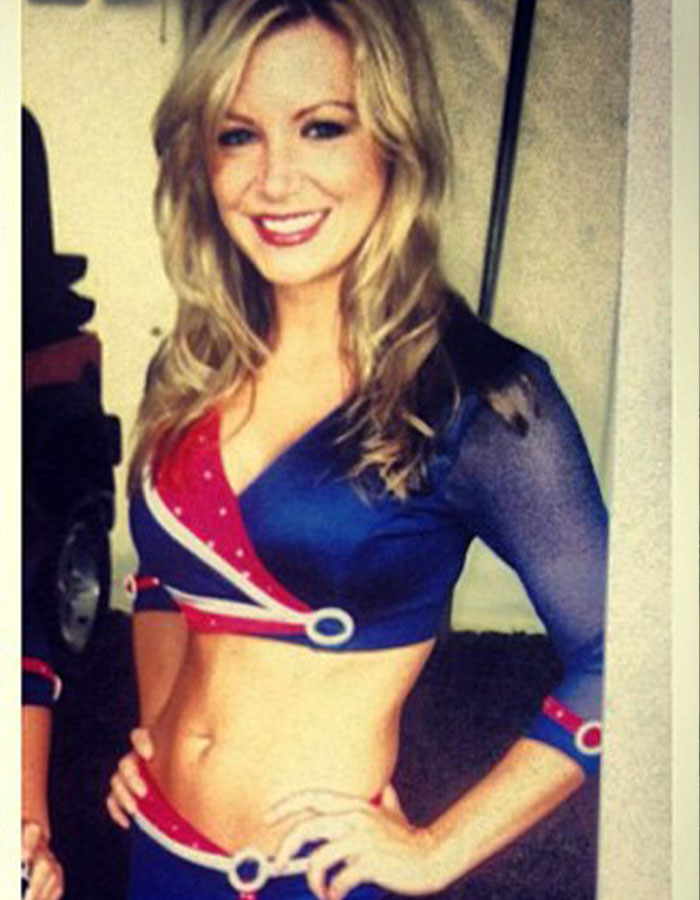
It might sound like the beginning of a classic romantic comedy, but for NFL cheerleaders, dating or even casually interacting with players was a strict violation of team policy.
According to former Buffalo Jills cheerleader Shana Klimeczko, “intermingling” with NFL players was completely off-limits. She shared a personal story from a team photoshoot that ended with an unexpected rule being enforced.
“NFL players from another team walked into the bar, and I was talking to them. I found out afterward they were players — and the entire squad had to leave,” Shana recalled.
“It’s called, ‘You can’t fraternize with the players.’ And I think it makes sense because you don’t want the players distracted. If you’re dating a player on the team, they can’t be distracted that you’re on the sidelines.”
Off the field, the rules didn’t relax. When the cheerleaders weren’t performing, behavior guidelines became even more strict — especially in public places like restaurants or bars.
This sheds light on the tight behavioral restrictions, strict professional boundaries, and the zero-tolerance policies that governed NFL cheerleaders’ lives — all to maintain the league’s brand reputation, public image, and team focus.
Tans were required
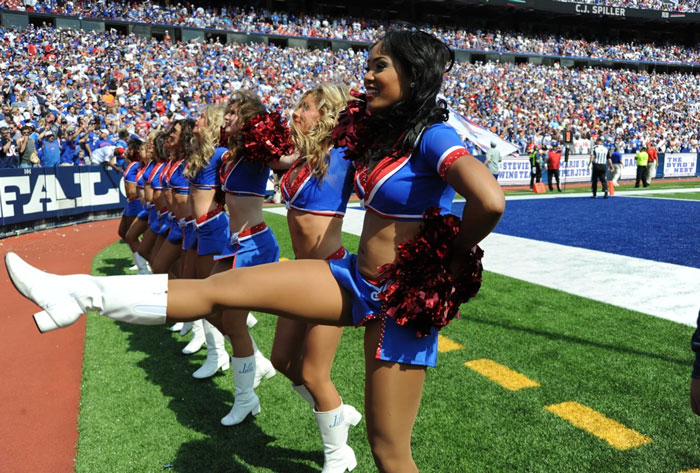
Buffalo, New York is famous for its harsh, snowy winters, but for the Buffalo Jills cheerleaders, looking “sun-kissed” was part of the job — no matter the freezing temperatures. According to reports and Shana Klimeczko’s firsthand experience, maintaining a glowing tan was actually an unwritten requirement.
“Spray tan or tanning,” Shana admitted. “I did both.”
Even while cheering in sub-zero weather, the expectation was to have a summer-ready appearance year-round. This points to the intense pressure cheerleaders faced to maintain a certain beauty standard, even when it contradicted the reality of their environment.
The story adds another layer to the conversation about appearance-based workplace rules, beauty expectations in professional sports, and the personal expenses often required to meet them.
The dress code was there for a reason
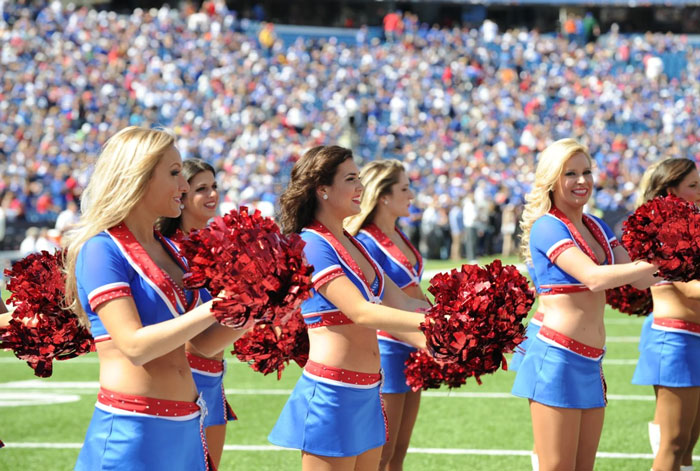
In addition to strict rules about their on-field uniforms, the Buffalo Jills cheerleaders also had to follow specific dress codes for any appearances off the field. Whether it was a charity event, corporate function, or public promotion, their outfits were always pre-approved and planned.
“They told us what to wear for events,” said Shana Klimeczko.
“We would either wear our uniform — and we had a few different versions — or we had to wear business casual attire for more formal or corporate appearances.”
This level of control highlights the importance placed on brand consistency, professional image, and public relations for NFL cheerleaders. Every look was part of a carefully crafted marketing strategy, ensuring the cheerleaders aligned with the team’s image both on and off the field.
Hair needed to be down
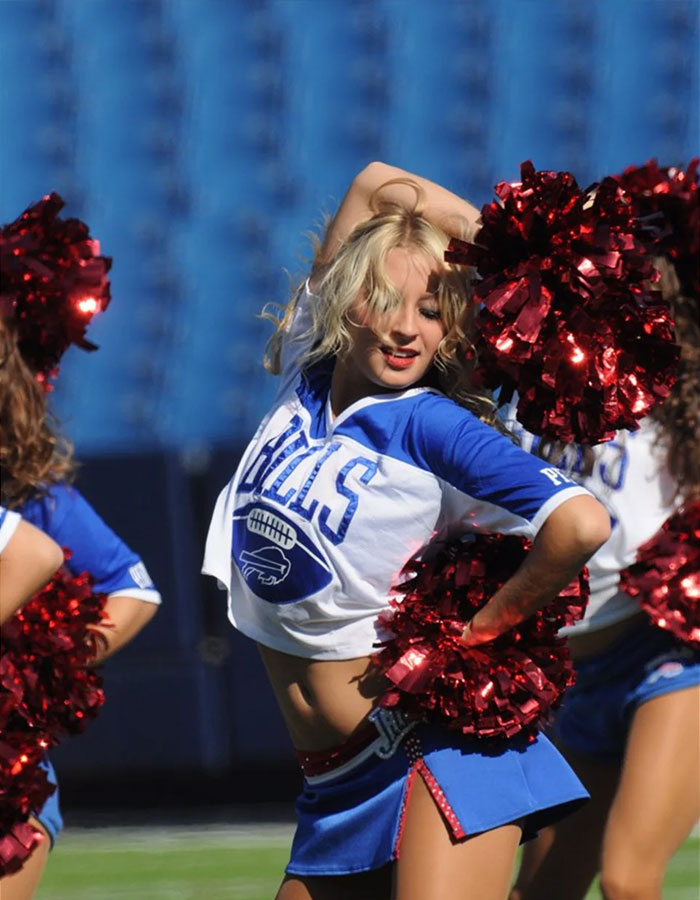
For many athletes, performing or working out with long hair down can be uncomfortable — but for the Buffalo Jills cheerleaders, it was part of the job requirement.
“You always had to have your hair down and full and not mangled,” shared Shana Klimeczko.
Maintaining a polished and voluminous hairstyle was seen as essential to the team’s professional image and the overall game-day presentation. It wasn’t just about dance skills — it was about looking flawless at all times.
However, one area where cheerleaders had some freedom was hair color. Unlike strict rules for makeup and outfits, the choice of hair color was left up to each individual.
This reflects the fine balance between creative expression and strict beauty standards that NFL cheerleaders were expected to maintain, adding to the ongoing discussion about personal appearance in professional sports, branding expectations, and gender roles in athletic entertainment.
Being in shape was, unsurprisingly, a must

Cheerleading demands more than just energy — it requires serious physical fitness and body control. For members of the Buffalo Jills, looking fit wasn’t just encouraged — it was expected.
Being on the team meant agreeing to be judged on physical appearance, including how your body looked in uniform and how well it fit the team’s image standards.
“Listen, you have to make sure that everything is tucked in and you also have to be fit,” said former cheerleader Shana Klimeczko. “You can’t have, I don’t know, things hanging out of you when you’re jumping and things like that.”
Shana also revealed that cheerleaders were told to do “flesh checks” — performing jumping jacks in front of mirrors to ensure that no excess skin or movement was visible. These requirements reflect the intense pressure placed on cheerleaders to maintain a slim, athletic figure at all times.
Though she’s no longer part of that world, Shana continues to live a health-focused lifestyle. Today, she works as a Pilates manager at Equinox in California, helping others stay strong and fit through professional fitness training.
Hand and foot warmers could be used
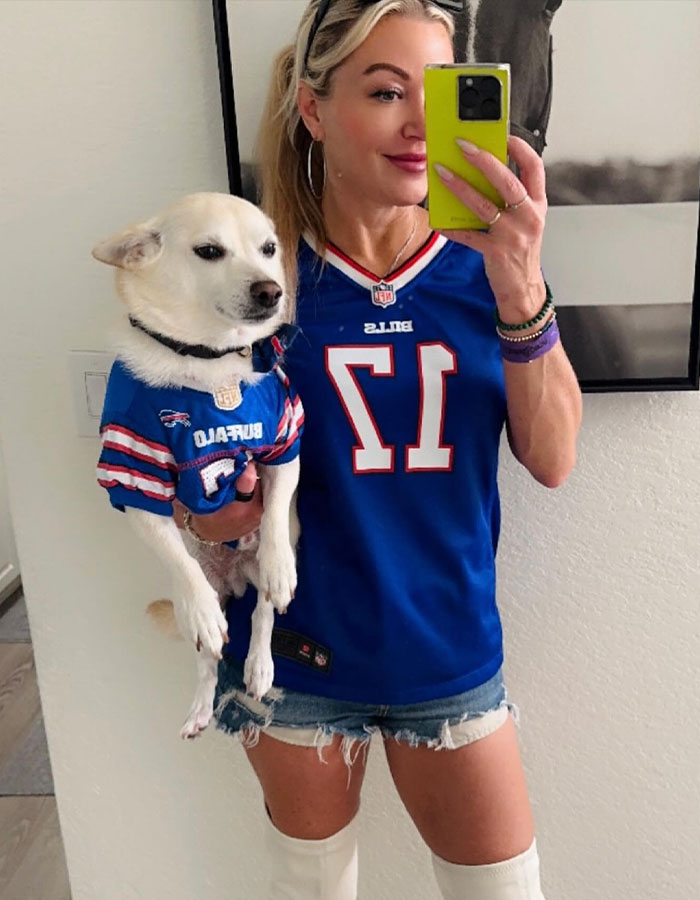
The iconic crop-top uniforms worn by the Buffalo Jills cheerleaders were eye-catching — but definitely not ideal for Buffalo’s freezing winter weather. With temperatures often dipping below zero, staying warm during performances was a serious challenge.
“It is freezing cold, but you wear these heat warmers in your hands and your gloves, and then in your boots too,” explained Shana Klimeczko.
To help manage the cold, cheerleaders were allowed to use hand warmers, foot warmers, and thermal gloves — small comforts that made a big difference during NFL games in harsh climates.
Despite the cold, it wasn’t always unbearable. Shana noted that constant movement while performing helped keep their body temperature up. And whenever they weren’t required to be outside for an appearance, the team had the option to stay indoors.
Practices were also held several times a week in a closed dome facility, which provided a controlled environment for rehearsals — a small luxury compared to the cold sidelines of game day.
This story adds depth to the conversation around cheerleading in extreme weather, health and safety for outdoor performers, and the behind-the-scenes realities of NFL cheerleaders.
They were allowed to have other jobs

Being a Buffalo Jills cheerleader wasn’t a full-time job — and it definitely wasn’t a high-paying career. According to Shana Klimeczko, the income was inconsistent and mostly based on the number of appearances, photoshoots, and promotional events she took part in.
“You don’t go into it to make money,” she explained. “That’s not why you’re a cheerleader for the NFL… It’s a dream come true, right? You can’t expect to become rich off of doing it. You’re not a Buffalo Bill.”
While the pay may not have matched the time and effort required, Shana emphasized that the experience was priceless. She described being a part of the team as something she’d do “1,000 billion percent” again — without hesitation.
Despite the challenges, she remains proud of her time as an NFL cheerleader, calling it a once-in-a-lifetime opportunity that gave her confidence, life experience, and a place in the NFL entertainment legacy.
Netizens shared their opinions










